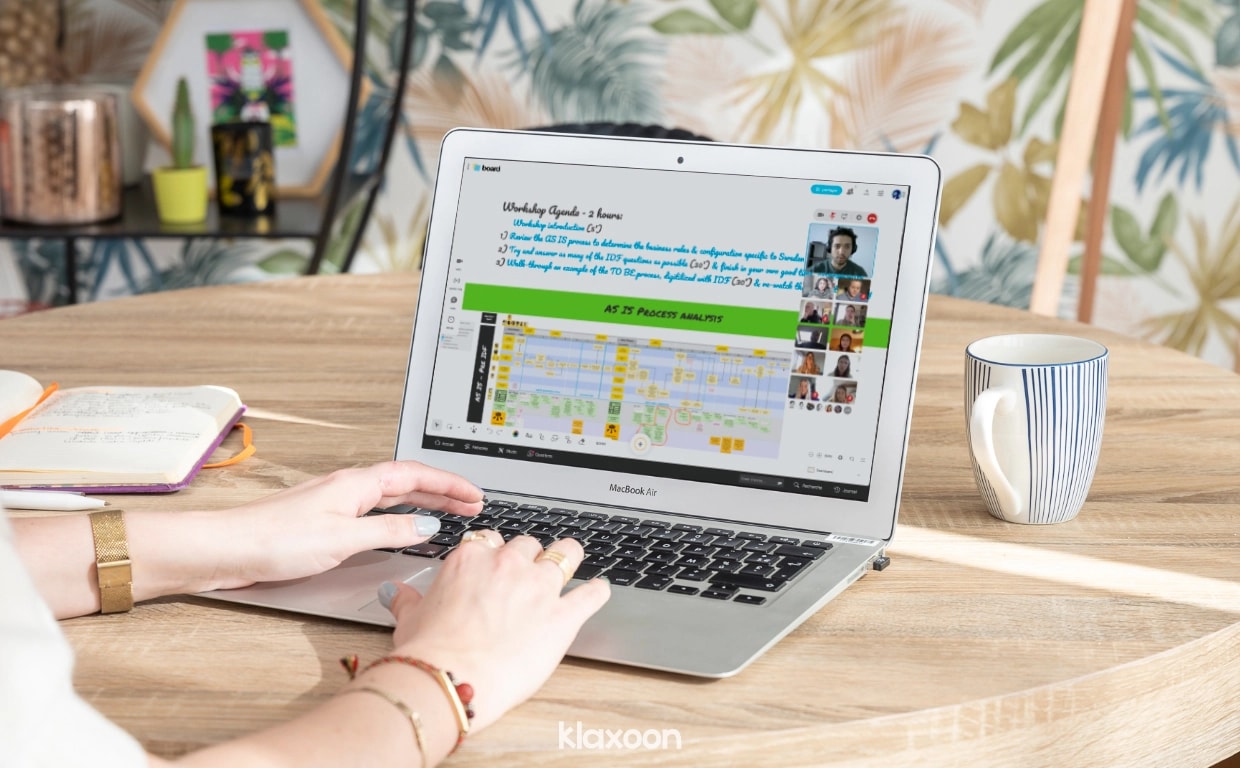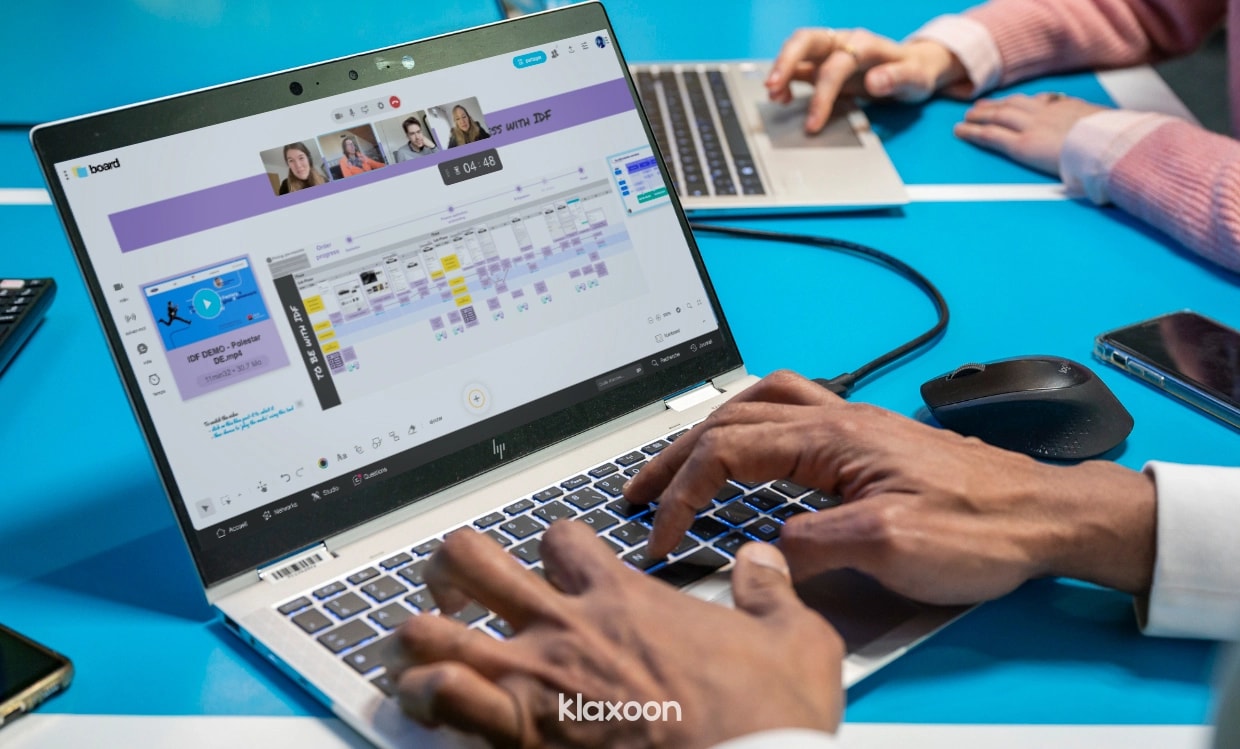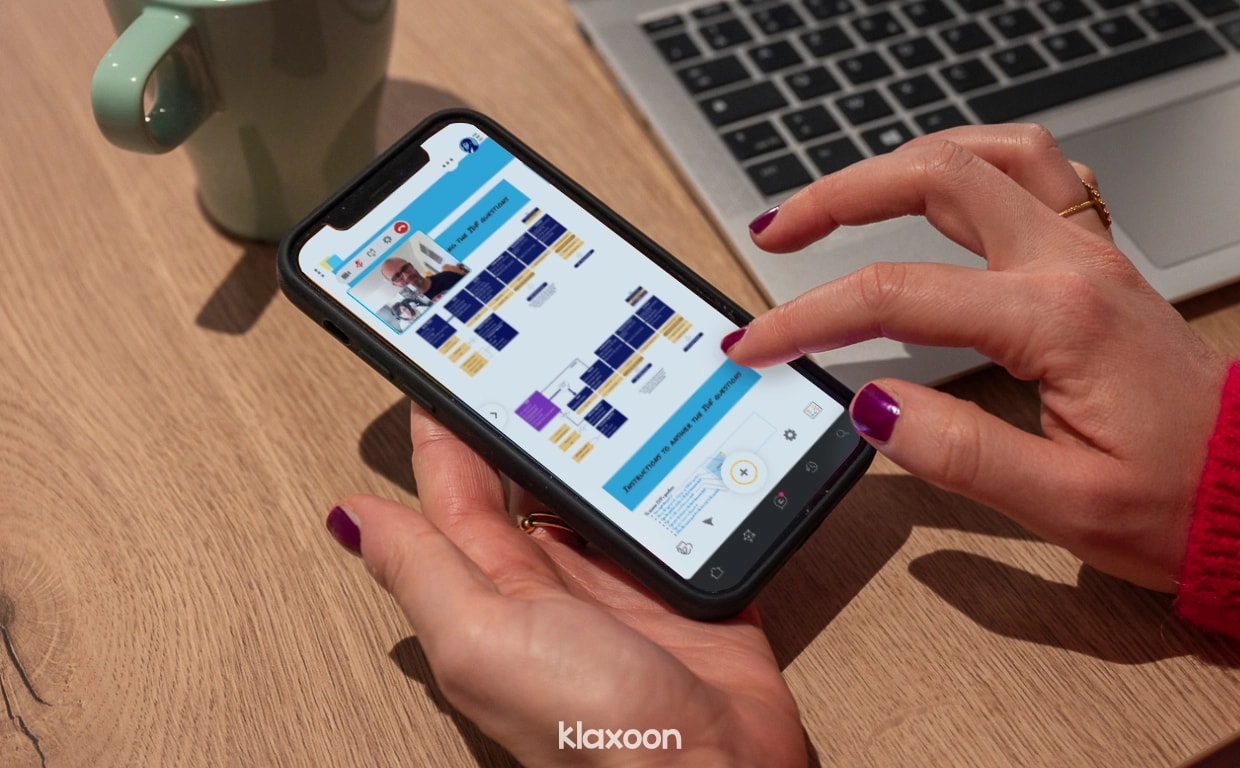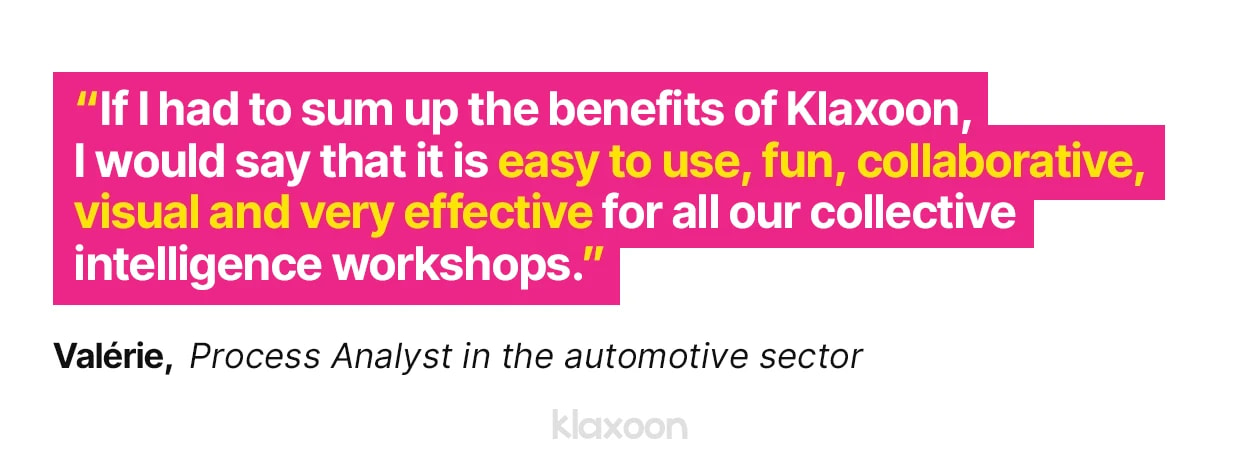How to save 3 months of project management with collaborative workshops
Published on February 14, 2025
How to save 3 months of project management with collaborative workshops

Process Analyst in the automotive sector
Valérie is a Process Analyst in a leading provider of automotive leasing and management services for businesses. She works in the BPM team (Business Process Management). This is a core team dealing with many cross-functional projects, focused on the analysis and improvement of business processes. Valérie's job there is to improve the existing processes.
Recently, the challenge for her was to take project management from a face-to-face format with kraft paper, to a digital format adapted to remote work, with Klaxoon.
The company aims to carry out transformation workshops in 43 countries, and transform the ordering process of leased cars from their partners such as Smart or Tesla, thanks to a new platform: International Digital Framework (IDF).
Throughout these workshops, teams have to move from a manual process to a digitalized process.
For Valérie's team, they first needed to succeed this international transformation in 2020, in a context of health crisis where constraints were strong: limited traveling, new working practices due to lockdowns, etc. It was therefore necessary to rethink the format of the workshops, which until now had been conducted only in person.
This initial format used to bring the teams together in a room, with rolls of physical kraft paper hung on the walls so that each participant could share their ideas on sticky notes. To make it evolve, Valérie needed a complete tool that would replicate the interactions and visual sharing of information in remote work.
Putting the activities at a distance during the lockdowns allowed Valérie's team to discover Klaxoon's Board, and to carry out their workshops remotely thanks to this whiteboard. This format proved to be much more effective than face-to-face workshops, so Valérie extended it to the workshops that followed, even when it was possible to conduct them on site.
Valérie and her team digitized all of their workshops using mainly Board, combined with Surveys directly in Klaxoon to support the transformation.
In concrete terms, Valérie organizes one workshop per country, entirely remotely, with all the stakeholders concerned by the changes:
The objective of this workshop is to present the new digital process ("TO BE"), and to collect "business" information on the existing process (AS IS) for developers and technical analysts.
With Board, Klaxoon's online whiteboard, the team in charge of the transformation simply creates a Board template, which they duplicate whenever they need to deploy the workshop in a new country.
Valérie uses Lean Management practices to run her workshops.
Lean Management aims to improve a company’s performance and, more specifically, its production’s quality and profitability.
This method allows to analyze all the steps of a process, to evaluate the added value of each step, and to optimize the work of operational teams.
In practice, this involves some concrete actions before, during and after the workshop:
Before the workshop, Valérie defines on the Board the current process (manual), confronts it with the future process (digitalized), and integrates the various questions of the developers and technical analysts.
After this stage, the Board is ready for the workshop.
Then, Valérie and her team gather the 8 to 15 participants concerned for the 2-hour videoconference workshop on the Klaxoon Board.
This Board then becomes a shared space for project documentation. Stakeholders can find all the information about the project, at any time and from anywhere. In addition, people who cannot join the workshop at the time it is held can still join the Board asynchronously afterwards, and share their functional specifications if necessary.
During the synchronous phase, the workshop is divided into 3 key steps:
The first step is to analyze the existing process. On the Board, it is represented by the phases and steps of the process in columns, and the different actors of the process in lines.
With Klaxoon, the process is presented in a very visual way, and all the useful information is centralized in the same tool. Participants can share photos of the stakeholders in each row, and use connectors to structure the process. The group also adds visuals to illustrate the different sub-phases.


Everyone in the team can easily add their ideas at any stage of the process.
The second step consists in presenting the future process and how it will impact the stakeholders on a daily basis.
On the Board, Valérie first shares a video introduction to the new process. Then, she presents the steps in a visual way. Participants can easily picture themselves through each step of the process, with a clear representation of the different phases and interdependencies.


Below the video icons, the timer is also a great tool to set a pace for the session, and not switch topics.
The last step consists of asking the participants to answer questions from the developers and technical analysts.
For this, synchronously at first, the facilitators explain:
Then, participants answer the questions asynchronously, on their own. Thanks to this asynchronous way of working, even other teams (external to the project) can join the Board during the process, to add questions or ideas without directly having to ask Valérie's team.


From any connected device, it is very simple to contribute ideas and participate.
As categories, the aim is to identify the subject concerned by the question:
To further specify each shared question, dimensions are used on Klaxoon to define:
For Valérie and her team, Klaxoon has been a time-saving tool in the digitalization of their workshops.
Klaxoon allows to centralize all the information, and to prepare the workshops beforehand in a clear, visual and structured way. This phase is very simple, because the BPM team has a ready-to-use Board model for it. It is a custom template, which they can reuse when transposing the process in a new country. This greatly reduces the time spent redesigning the structure of each new workshop.
Then, during the session, the prepared framework helps to focus people's attention. This means that on a Klaxoon Board, participants can easily follow the facilitator where they activate the Synchro tool. They can also ask Questions, and thus get very quick feedback from participants.
There is also a significant gain in the time it takes to deliver a presentation. With Klaxoon, there is no longer any need to make a report at the end of the workshop, because everything is directly centralized and available. All the content is preserved, and the ideas shared during the workshops are not lost. This is also valid in case someone joins the project along the way.


According to the feedback from the director of the International Digital Framework (IDF), the implementation of the workshop and the use of Klaxoon allowed them to save 3 months per project, from the preparation to the steps following the workshops.
From now on, Valérie also uses Klaxoon to lead her face-to-face workshops, because it is more fun, the tool crystallizes all the topics they want to address, and the participants are quickly mobilized around the topics that require their attention the most.
When you're live with Klaxoon, it's great! That's what we did in Morocco during one of our latest projects, and we saw only huge benefits.
Unlock your teamwork potential